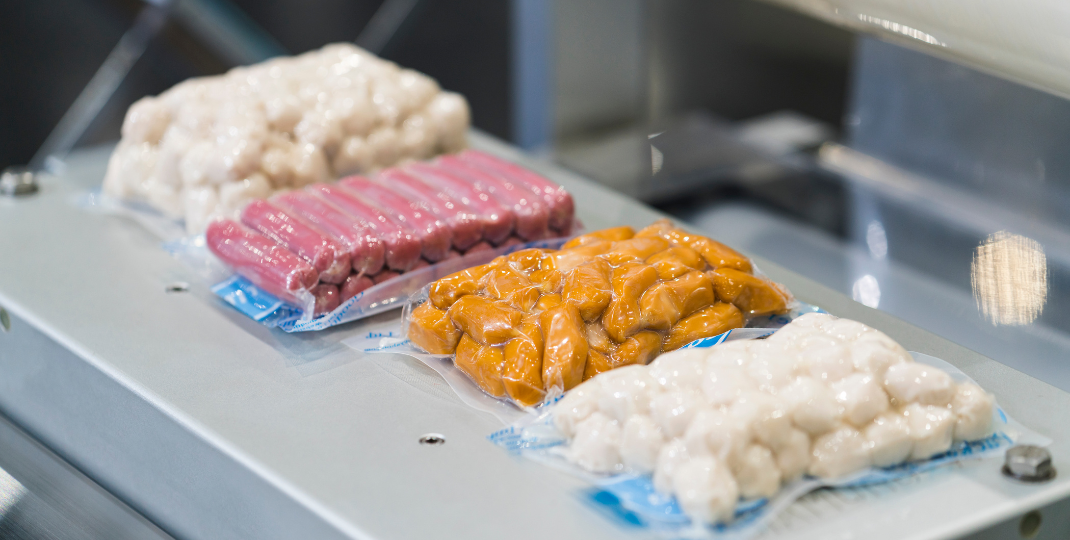Chicken cell meat, also known as cultured or lab-grown meat, is a groundbreaking alternative to traditional meat production methods. This innovative technology involves growing real chicken cells in a laboratory setting, without the need for raising and slaughtering live animals. By using advanced tissue engineering techniques, scientists are able to produce meat that looks, tastes, and has the same nutritional value as conventional chicken meat. This revolutionary approach has the potential to address various ethical and environmental concerns associated with traditional meat production, making it a promising solution for creating sustainable and cruelty-free food options.

How is chicken cell meat made?

What are the potential health risks associated with consuming chicken cell meat?
Consuming chicken cell meat, also known as cultured or lab-grown meat, may come with potential health risks. One concern is the risk of contamination during the laboratory process, which could lead to foodborne illnesses. Another issue is the use of growth factors and additives in the production process, which may have unknown long-term health effects. Additionally, if the production of cell-based meat relies on antibiotics, it could contribute to antibiotic resistance. As this is a relatively new technology, more research is needed to fully understand and address these potential health risks before widespread consumption can be considered safe.
How does chicken cell meat compare to traditional chicken in terms of taste and texture?
Cell-based chicken meat, also known as cultivated or lab-grown chicken, is a form of meat produced by growing actual animal cells in a controlled environment. In terms of taste and texture, cell-based chicken meat aims to closely mimic traditional chicken. The taste of cell-based chicken seeks to replicate the flavor profile of conventional chicken, while its texture aims to mimic the fibrous and tender consistency found in traditional chicken products. Although there may be slight differences due to variations in production methods and ingredients used, the goal of cell-based meat is to provide a comparable sensory experience to traditional chicken without the need for raising and slaughtering animals.
What is the environmental impact of producing chicken cell meat?
The environmental impact of producing chicken cell meat, also known as cultured or lab-grown meat, is generally considered to be significantly lower compared to traditional animal agriculture. The production process requires less land, water, and energy, resulting in reduced greenhouse gas emissions, deforestation, and water pollution. It eliminates the need for intensive farming practices, such as feed production, animal waste management, and transportation of live animals, thereby mitigating associated environmental issues. However, the overall sustainability of chicken cell meat production depends on factors like the energy source used in laboratories and the proper management of cell culture media and waste disposal. Continuous advancements in technology and scaling up production might further improve its environmental impact and make it a more sustainable alternative to conventional meat production.
Are there any ethical concerns regarding the production of chicken cell meat?

There are several ethical concerns surrounding the production of chicken cell meat. Firstly, there are concerns about animal welfare as conventional meat production involves raising and slaughtering animals for their meat, whereas cell-based meat requires the extraction of cells from live animals. Additionally, the use of growth factors and other additives in the cultivation process raises questions about the safety and long-term effects on human health. Furthermore, there may be environmental concerns related to the energy and resources required for cell-based meat production. Lastly, there is a potential impact on traditional farming communities and the economic implications of transitioning to this new form of meat production.

How long does it take to grow chicken cell meat from start to finish?
The process of growing chicken cell meat typically takes several weeks from start to finish. It begins with the collection of cells from live chickens, which are then cultured and multiplied in a lab setting. These cells are provided with a nutrient-rich environment that helps them grow and differentiate into muscle tissue. The duration of this stage can vary depending on the specific cell culture techniques and conditions used. Once enough cells have been generated, they are combined to form muscle fibers and further cultured to develop into edible meat products. This step can take anywhere from a few days to a couple of weeks, again depending on the specific processes employed. Overall, the time required for growing chicken cell meat can range from a few weeks to a couple of months, including the initial cell collection, cell multiplication, and muscle development stages.
What are the costs involved in producing chicken cell meat, and how does it compare to traditional chicken?
The costs involved in producing chicken cell meat include the initial investment in research and development, setting up a lab for cell cultivation, purchasing and maintaining equipment, purchasing cell culture media, and employing skilled scientists and technicians. Additionally, there are ongoing costs such as energy consumption, waste disposal, quality control, and scaling up production. Compared to traditional chicken production, cell-based meat currently has higher costs due to the novel technology and limited scale of production. However, with technological advancements and economies of scale, it is expected that the costs of producing cell-based meat will decrease over time and become more competitive with traditional chicken.

What are the potential future applications for chicken cell meat beyond food consumption?

In the future, chicken cell meat could have various applications beyond food consumption. One potential application is in the field of biomedical research and regenerative medicine. Chicken cell meat can be used to study diseases, test new drugs, and develop therapies for human health. It could also have industrial applications such as producing animal-free leather or feathers, reducing the need for traditional farming practices. Additionally, it may find applications in pet food or animal feed industries, providing a sustainable and ethical alternative to conventional meat production. Overall, the potential future applications of chicken cell meat extend beyond food consumption, offering innovative solutions in various industries.
Chicken Cell Meat: The Next Frontier in Sustainable Protein Production
In conclusion, chicken cell meat holds immense potential in revolutionizing the future of the food industry. With its ability to address concerns related to animal welfare, environmental sustainability, and public health, this innovative technology offers a promising solution to meet the increasing global demand for meat without relying on traditional livestock farming methods. As research and development continue to advance, it is crucial to ensure the safety, affordability, and accessibility of chicken cell meat to maximize its benefits. By embracing this new frontier of food production, we can pave the way for a more sustainable and ethical food system that benefits both humans and the planet.
